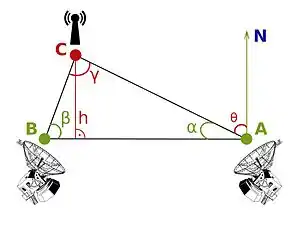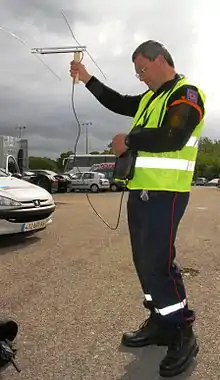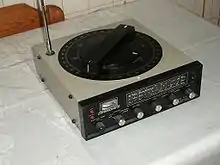Radio direction-finding station
Radio direction-finding station is – according to article 1.91 of the International Telecommunication Union's (ITU) ITU Radio Regulations (RR)[1] – defined as «A radiodetermination station using radio direction-finding.»

Each radiodetermiantion station shall be classified by the radiocommunication service in which it operates permanently or temporarily. If this station operates in a safety-of-life service, it will be protected for Interferences.
- See also
Classification
In accordance with ITU Radio Regulations (article 1) this type of radio station might be classified as follows:
Radiodetermination station (article 1.86) of the radiodetermination service (article 1.40 )
- Radionavigation mobile station (article 1.87) of the radionavigation service (article 1.42)
- Radionavigation land station (article 1.88) of the radionavigation service
- Radiolocation mobile station (article 1.89) of the radiolocation service (article 1.48)
- Radiolocation land station (article 1.90) of the radiolocation service
- Radio direction-finding station
- Radiobeacon station (article 1.92) of the radionavigation service
- Selection radio direction-finding stations

RDF lorry
(British Post Office, 1927)
RDF antennas
(Galeta Island)
B-17F RDF antenna (in the prominent teardrop housing under the nose) 
ILS Localizer (providing horizontal guidance) 

RDF on 121.5 MHz (Aircraft emergency frequency) 
Aereal 121.5/156.8 MHz (Emergency location beacon aircraft) 
RDF station 410 kHz 
Maritime RDF station (GT-302) 
Maritime RDF station (Pelengator)
References / sources
- ITU Radio Regulations, Section IV. Radio Stations and Systems – Article 1.91, definition: radio direction-finding station
This article is issued from Wikipedia. The text is licensed under Creative Commons - Attribution - Sharealike. Additional terms may apply for the media files.